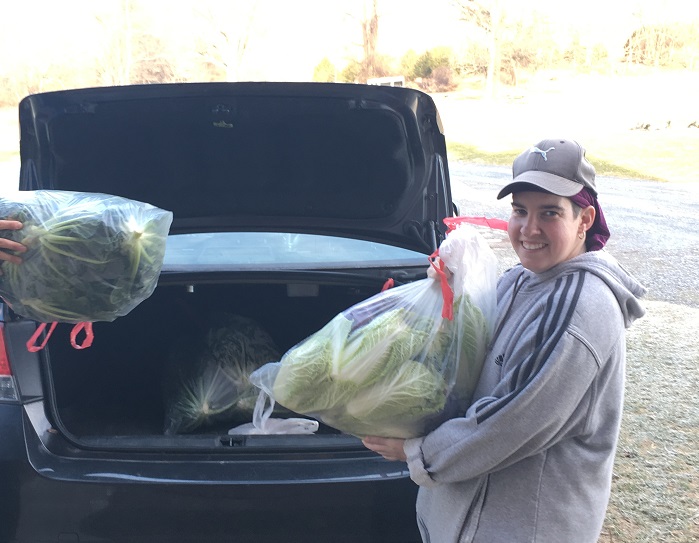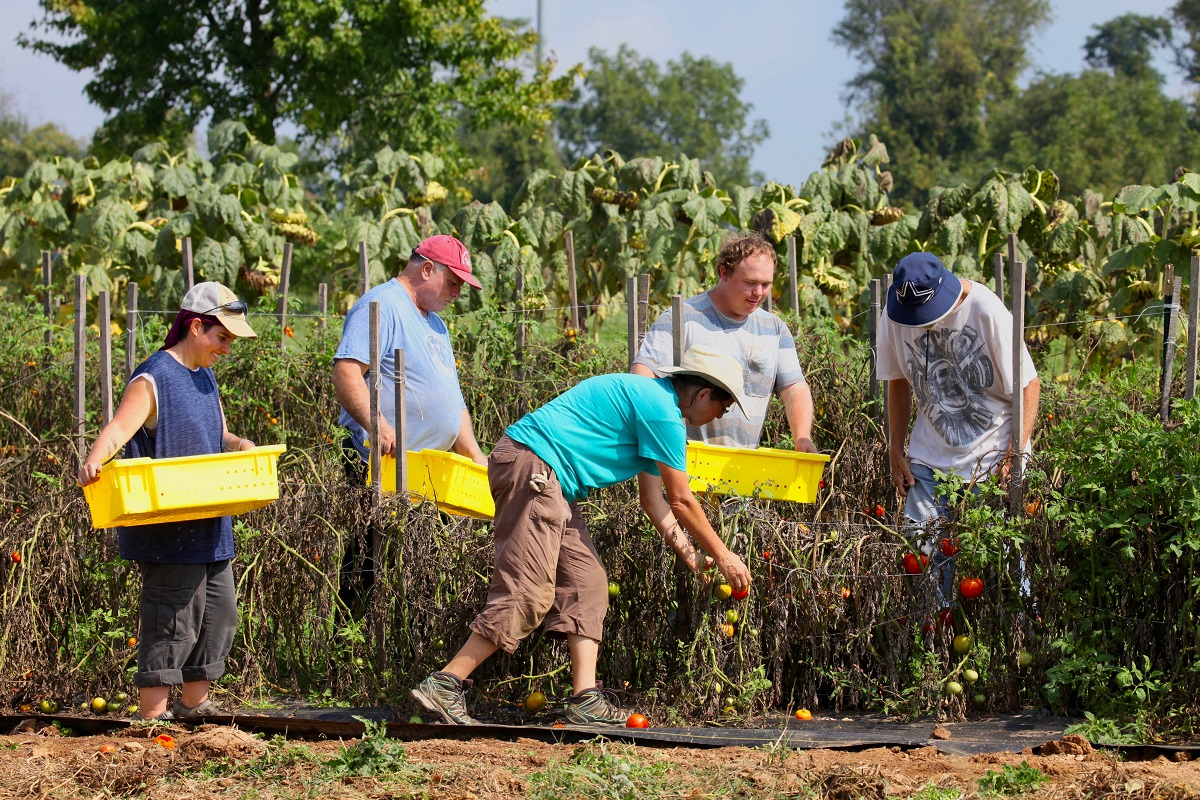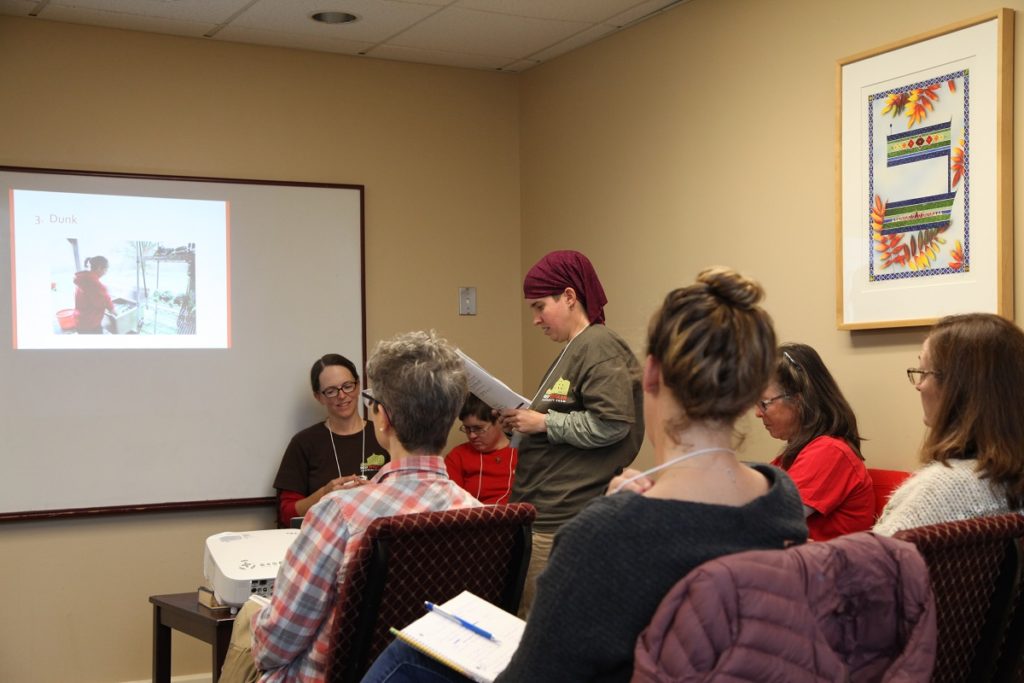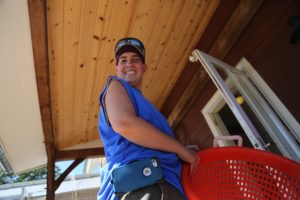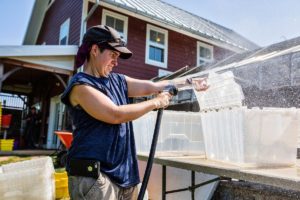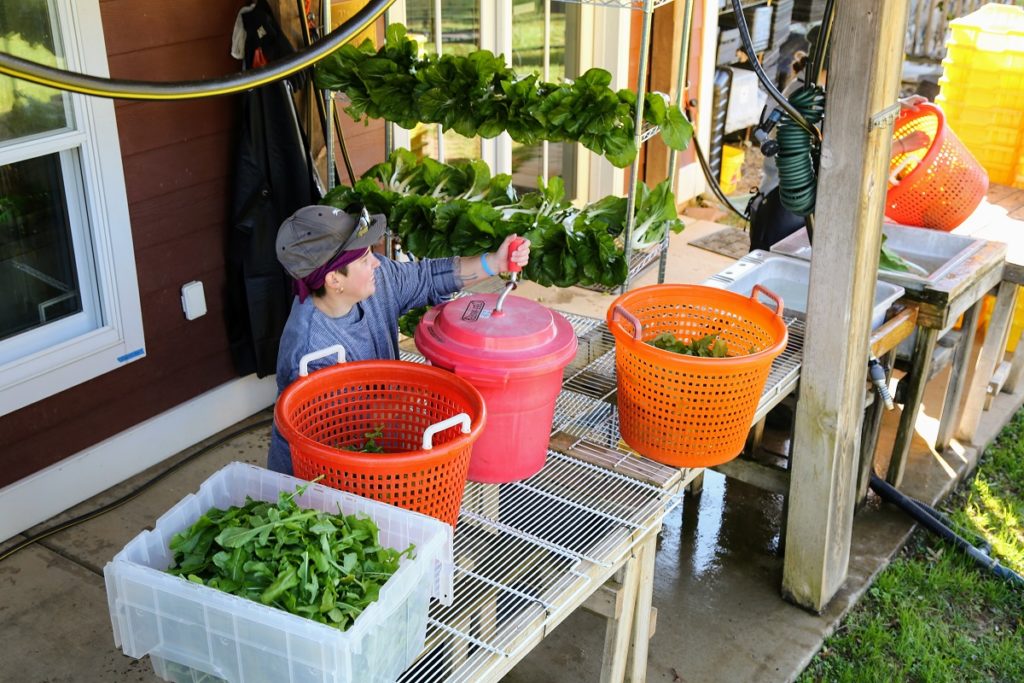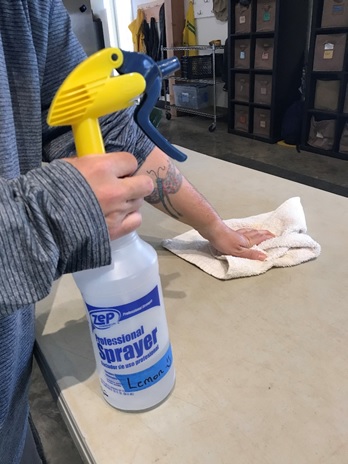Grower Sam Sheehan has worked at Red Wiggler for 12 years. On November 12, 2019, Sam was part of a team that presented at the 7th National Farm-Based Education Conference in Reisterstown MD.
Here is a modified essay of her portion of Red Wiggler’s presentation, “Matching Abilities to Farm Jobs and Tasks.” Sam spoke about Red Wiggler’s wash station process.
When I first started at Red Wiggler, I knew very little about farming. It was a lot of learning as the seasons went on.
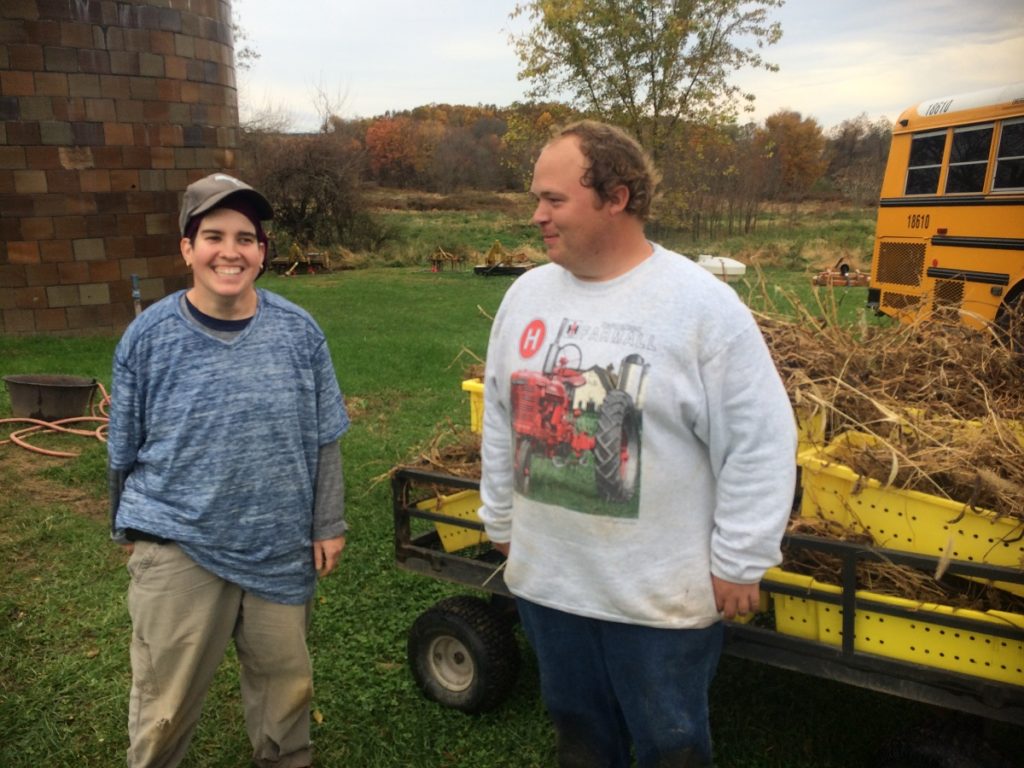
 While a team is harvesting, I am usually working at the wash station, either by myself or with another person. I like working at the wash station because it’s one place I’m the leader of a task. It’s my job at the wash station to manage the overall process of the wash station.
While a team is harvesting, I am usually working at the wash station, either by myself or with another person. I like working at the wash station because it’s one place I’m the leader of a task. It’s my job at the wash station to manage the overall process of the wash station.
At the wash station my goals are to:
* Explain things clearly If I’m working with someone else and
* Make sure the vegetables that are coming out of the field are as clean as possible.
When the vegetables come out of the field we have a set process on what to do. These are the steps in the process.
1) The first step is to make sure the wash station is clean and ready for vegetables to come down from the field. I do this by making sure the metal table and sinks at the wash station are sprayed with a lemon solution. The sinks are also sprayed out with water to rinse them. The white tables in the program room where we hold unwashed produce are also sprayed with a lemon solution.
2) We always weigh and record the vegetables. We weigh and record in pounds and record the type of vegetable. If someone is working with me, I will have them fill the sinks while I weigh the vegetables. After the basket has been weighed, we move the basket to the sink.
3) The next step is dunking the vegetables to rinse them. We dunk twice and drain if greens are being washed. If someone is helping me, they will do one dunk step, and I’ll do the other.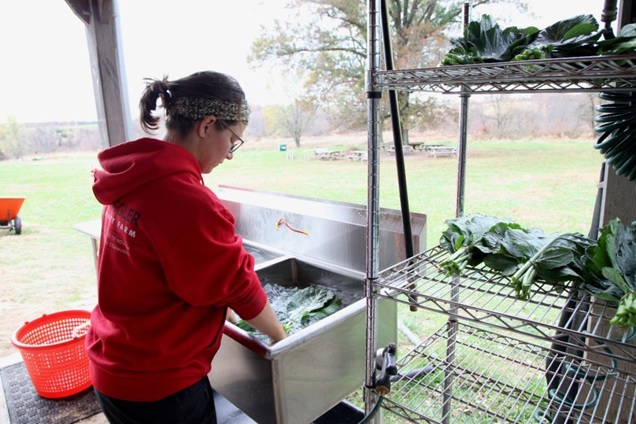
4) After rinsing we dry. We do this by placing the greens on the metal rack for a short time.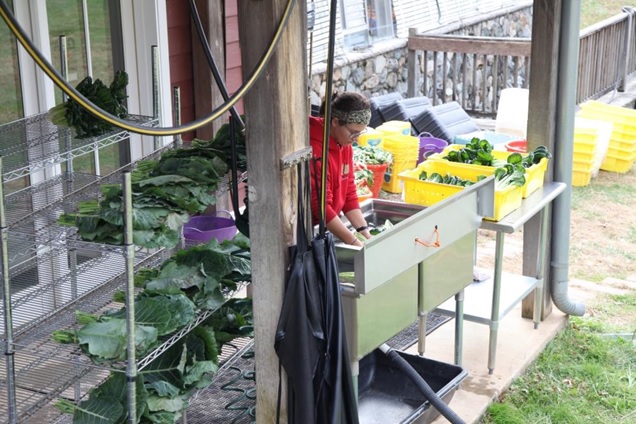
5) Next we pack and label. It is important to write clearly on the label what the type of produce is in the bin. Sometimes I will do this job, while someone else is draining the sinks and refilling them with water.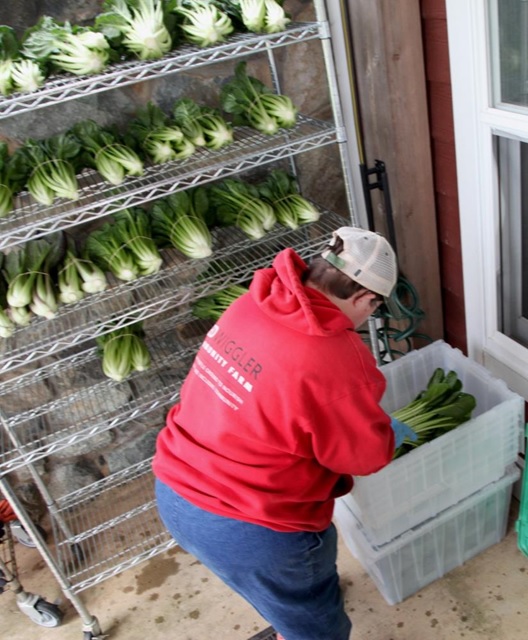
6) After everything is packed and labeled, we load the vegetables onto the golf cart, and I will drive the vegetables down to the fridge.
One lesson I have learned is that it’s harder to be a leader than I thought.
* I’m the one making the decision.
* It’s hard to explain the directions so that someone can understand the process.
* The way I do it might be different than someone else does it.

Thank you Sam for all your hard work and for doing a great job at the conference!